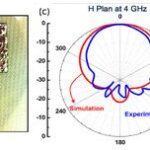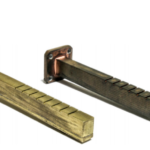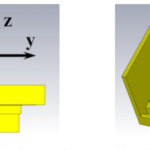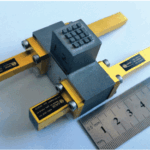

Recent research shows a further convergence of 3D printing and antenna technology, as scientists from Barcelona explore a better way to improve radio frequency identification. With their findings released in the recently published “3D-Printed UHF-RFID Tag for Embedded Applications,” the authors (hailing from the University of Barcelona and Universitat Politècnica de Catalunya) created prototypes for more compact antenna systems that could be easily integrated, with conductivity preserved.
Passive RFID technology is employed in applications that require tracking, logistics, and control; however, historically it has been difficult to produce a design that is “sufficiently robust.” This is due to the constant potential for interference due to electromagnetics, resulting in decreased range for RFID activation.
While numerous environments could be affected, one of the most interesting is in a medical setting with lossy media (a material that causes energy to dissipate) reducing the effectiveness of RFID tags in terms of radiative qualities. Obstacles also arise in terms of immersion. The goal is for RFID tags to work efficiently and effectively while near possible environmental impacts such as lossy media, as well as when they are completely immersed in such material.
“An antenna immersed in a certain medium must be able to operate properly, to the maximum extent, regardless of changes in the dielectric constant and conductivity. This does not only mean that it must exhibit good matching throughout a certain range of values, but also that it should respond adequately to temporal variations,” explain the authors.
The researchers designed and 3D printed four prototypes, with such considerations in mind as space distribution with regions, packaging for stability, and effective methods of embedding. The samples featured a biconical spiral antenna design with a dielectric coating serving as a buffer, warding off any issues for variations due to electromagnetic changes.

The design reflects the requirements for a commercial UHF-RFID integrated circuit, introducing a 3D printed model with copper electroplating. The 3D antenna features a square plate in the middle, and “implemented in a dielectric material.” Comprised of two radiators, a matching network, and the dielectric coating, the researchers also had to consider the following design parameters:
- Total length of the antenna
- Cone angle
- Width of the conical radiator sections
- Width of metal trace in the conical spiral
- Pitch between turns in the conical spiral
- Perimeter and surface of square loops for the matching network
The main body of the antenna was 3D printed for each of the samples (consisting of the conical reference antenna and 3 spiral antennas), coated, and evaluated for performance during immersion in media like fat, bone, brain, and water.
The researchers validated both the cylindrical design and coating of the antenna and then moved on to integrate the RIFID IC, a Higgs 3D from Alien Technology. For waterproofing, the reader tag was enveloped in plastic film. Connectivity was verified with control software, first performed in the air, and then during immersion in water—reflecting a 60% decrease in the communication link range.
“This agrees with EM simulations that account for losses in water, and validates the communication capabilities of the proposed tag,” stated the researchers.
In the end, the team constructed a “fully-functional compact UHF-RFID tag,” made up of the antenna, coating, and commercial RFID IC. Both feasibility and performance were exhibited during final testing, with the researchers confirming that the design and final prototype showed good potential for embedded applications—and for use in industries such as construction, healthcare, and more.
Other types of antennas have been 3D printed successfully in recent years too, created for satellite technology, as well as other unique applications like wearables.
[Source / Images: “3D-Printed UHF-RFID Tag for Embedded Applications”]
If you're looking to get architectural 3D animation in the USA, our service provides an exceptional way to bring your architectural concepts to life through dynamic, immersive visuals. Through our platform, you can easily request high-quality 3D animations that showcase your designs in motion, offering a detailed view of your project from multiple angles and perspectives. Whether it's for a real estate development, a commercial building, or an urban planning project, our expert team ensures that every detail is captured in a visually compelling animation.
Through our website, you can seamlessly get architectural 3D animation tailored to your project’s specific needs. With our help, you can offer potential clients or investors an engaging experience that goes beyond static images. By integrating CGI animations with real-world settings, lighting, and textures, our team creates a lifelike experience that allows your audience to interact with your project as though it were already built. This service is perfect for presenting complex designs in a clear, visually attractive way that stands out in the competitive architectural market.




